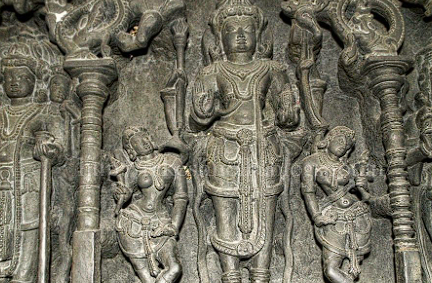Kalyana Chalukyas
Recent archaeological discoveries in Kankal village, Vikarabad district, have revealed three Kannada inscriptions from the Kalyana Chalukya era. The inscriptions date back to the reign of Emperor Someswara-III Bhulokamalladeva, specifically from 1129 to 1132 CE. They document events, including temple construction and donations.
Historical Context of the Kalyana Chalukyas
- The Kalyana Chalukyas ruled from the 6th to the 12th centuries in the Deccan region of India.
- They emerged as a powerful dynasty after being a feudatory of the Rashtrakuta Empire.
- The dynasty’s capital was Kalyani, located in present-day Karnataka.
- The Kalyana Chalukyas are noted for their contributions to art, architecture, and literature.
Inscriptions and Their Significance
- The three inscriptions found in Kankal are dated December 25, 1129, October 5, 1130, and January 8, 1132.
- The first inscription details the construction of the Bijjeswara temple and a donation of land by a local chief.
- The second and third inscriptions record further donations, denoting the community’s involvement in temple patronage.
- These inscriptions provide vital information about the socio-economic conditions of the time.
Administration and Governance
The Western Chalukya administration was hereditary, with power typically passed to male heirs. The kingdom was divided into regions managed by feudatories like the Hoysala and Kakatiya. This decentralised governance allowed for effective local administration and military organisation.
Art and Architecture
The Kalyana Chalukyas are credited with advancements in architecture, particularly in the Deccan style. Their artistic contributions include the construction of numerous temples, known for their intricate carvings and unique architectural features. Notable examples include the Mallikarjuna temple in Bellary and the Siddeshvara temple in Haveri.
Literary Contributions
The Kalyana Chalukyas played a vital role in the development of Kannada and Telugu literature. Their patronage of poets and scholars encourageed a rich literary culture during their reign. This period is often regarded as a golden age for literature in the region.
Decline of the Kalyana Chalukyas
The decline of the Kalyana Chalukyas began after the death of Vikramaditya VI in 1126. Continuous conflicts with the Chola dynasty weakened their power. Subsequent rulers faced rebellions from feudatories, leading to the eventual disintegration of the empire.
Month: Current Affairs - February, 2025
Category: Art & Culture Current Affairs








